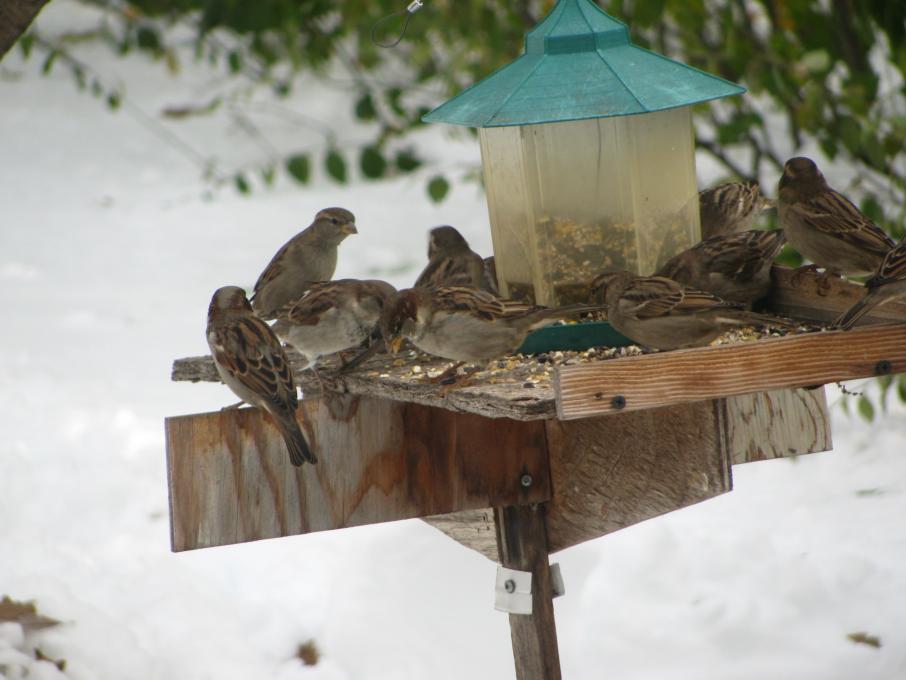Stephen
Forum Replies Created
Viewing 6 posts - 1 through 6 (of 6 total)
-
StephenParticipantApparently the system does not like the association of "e-r-e-c-t" and "stance" together that were used to describe the fact that the nuthatch does not have the same posture as other perching birds.in reply to: Activities: Bird ID Practice #705297
-
StephenParticipantattempt #4 - the remainder of activity 2 which is now split into three responses; Activity 2 – White-breasted Nuthatch: “dark crown and nape; white face; gray back” [ca. 6”], narrow pointed beak, creeps down tree trunks, eats at feeders, tends to occur as one or two individuals, correct range.in reply to: Activities: Bird ID Practice #705296
-
StephenParticipantThird attempt to get it all in: Activity 2 – three black and white birds: Chickadee: “black cap and bib; white cheeks, buff flanks” [ca. 5 ¼ “], foraging in trees or at feeders, “winter flock of 6-10 birds”, distinctive song, correct range.in reply to: Activities: Bird ID Practice #705295
-
StephenParticipantthis is part two - actually the first part of my response as I am trying to determine why the system gave me an error that I was using mature or inappropriate language? Activity 1 – distinguishing by size/shape/attitude/activity – From sightings on the Souris River at Wawanesa, Manitoba: Bufflehead & Double-crested Cormorant. Using Stokes Field Guide: Bufflehead, “small duck [ca. 14”] with a large rounded head.” Swimming in river, short neck, large white “wedge at back of dark head” range includes S. Manitoba; Cormorant, larger bird [ca. 33”] stands semi-upright on log or swims with body low in water, all black, long neck, long orange beak, range includes S. Manitoba.in reply to: Activities: Bird ID Practice #705294
-
StephenParticipantDark-eyed Junco: (slate coloured race), “pale bill; dark eye; whitish belly; tail dark with conspicuous white outer feathers”, [ca. 6”] , dark gray with white belly, small short heavier beak, correct range. Activity 3 – food finding behaviour: Robin – walking on ground listening probing ground; Chipping Sparrow – rapid movements along ground or in trees; House Sparrow – searching grass and leaf litter for food. Activity 4 – identify favourite bird: Raven – black, wedge shaped or rounded tail, moderate to large size, correct range, wide range of vocal croaks, squawks, mews and gargles, [you can tell when a hawk is around as there is a very rapid “Hawk, Hawk, Hawk”] spends time training up young with many lessons and determined weaning, loves to soar and play in the wind. Re: photo - We have had over 120 house sparrows at our feeder, porch and yard at one time under certain winter weather conditions. Particularly ca. -30 C., sunny, and north or northwest wind.
 in reply to: Activities: Bird ID Practice #705293
in reply to: Activities: Bird ID Practice #705293 -
StephenParticipant
 The material so far has been helpful and I look forward to the rest of the course. We live close to the river and a nesting site for a Raven pair. Over the years we have watched their antics in the wind, listened to the diversity of their calls - including their rapid "hawk, Hawk" when a hawk or eagle comes too close to home. Also, watching the training of the young birds is fascinating and entertaining. in reply to: Activities: Exploring Birds #699707
The material so far has been helpful and I look forward to the rest of the course. We live close to the river and a nesting site for a Raven pair. Over the years we have watched their antics in the wind, listened to the diversity of their calls - including their rapid "hawk, Hawk" when a hawk or eagle comes too close to home. Also, watching the training of the young birds is fascinating and entertaining. in reply to: Activities: Exploring Birds #699707
Viewing 6 posts - 1 through 6 (of 6 total)

 The material so far has been helpful and I look forward to the rest of the course. We live close to the river and a nesting site for a Raven pair. Over the years we have watched their antics in the wind, listened to the diversity of their calls - including their rapid "hawk, Hawk" when a hawk or eagle comes too close to home. Also, watching the training of the young birds is fascinating and entertaining.
The material so far has been helpful and I look forward to the rest of the course. We live close to the river and a nesting site for a Raven pair. Over the years we have watched their antics in the wind, listened to the diversity of their calls - including their rapid "hawk, Hawk" when a hawk or eagle comes too close to home. Also, watching the training of the young birds is fascinating and entertaining.